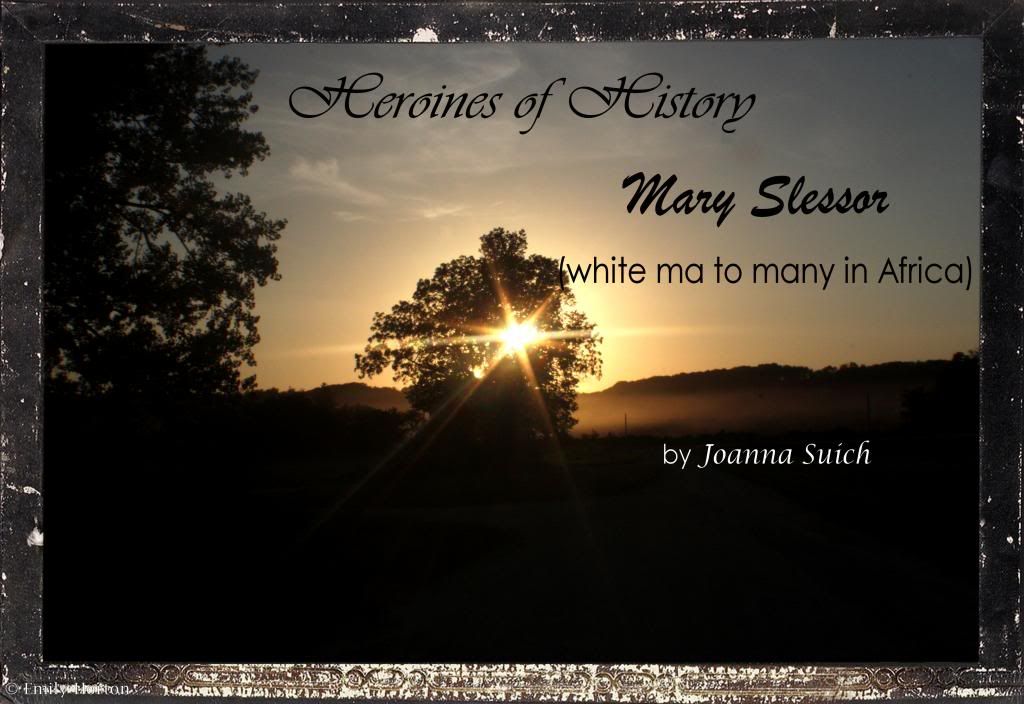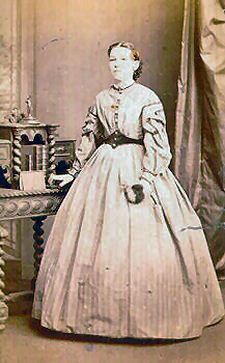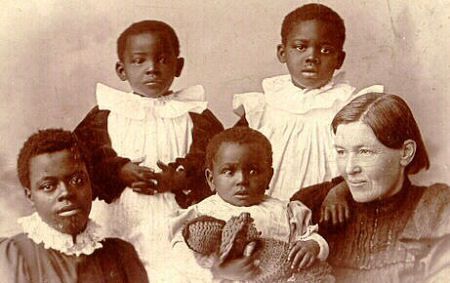Heroines of History: Mary Slessor

A heroine is defined in the dictionary as a woman who is well-known for courage and daring action. It's further described as someone who is noted for a famous achievement in a particular field or situation. In our Christian faith, we come across stories of women whose testimonies and actions have radiated Christ in their own lives and have inspired others to see that Light as well. The beauty is that these faith heroines point us to Christ and encourage us to live a life worthy of the calling we have received.
 With fiery red hair, as well as an equally fiery spirit, and a petite frame, Mary Slessor wasn't exactly
who you pictured to be braving the dense African jungle to share the
Good News. God, however, often uses those we may not expect or those
who seem weaker or smaller. Such was the case with Mary.
With fiery red hair, as well as an equally fiery spirit, and a petite frame, Mary Slessor wasn't exactly
who you pictured to be braving the dense African jungle to share the
Good News. God, however, often uses those we may not expect or those
who seem weaker or smaller. Such was the case with Mary.Mary had always longed to follow in Dr. Livingstone's footsteps, but there were many who said she'd just be going to her grave early. They recounted story after story of missionaries dying within the first year or two on the field, trying to discourage her from going on the mission field. One day, Mary's mother told her that Mary must go to Calabar (now modern day Nigeria). Mary, however, wasn't sure that was God's will, so when she did eventually apply to the Foreign Mission Board, she said she would go anywhere. Imagine her shock when the one of the board's commissioners told her that her application was just in time because they needed missionaries in Calabar!
After some training in Edinburgh, Mary sailed to Africa in August 1876. Once in Calabar, Mary came across several obstacles in her ministry work, including the fact that the natives said whatever they thought Mary wanted to hear and the fact that white men were trading with the natives and giving them rum and gin. Mary also came across much witchcraft and barbaric tribes. It wasn't long, though, that the natives began to see that this strange White Ma, as they called her, truly cared for them and wanted to show them God's love.

It certainly wasn't easy, though. Many of the Efiks (the natives) were deeply entrenched in their witchcraft customs, which included killing twin babies because they believed one of the babies to be a devil-child. One day, a trader cautiously brought her a bundle of rags and whispered that he found it upriver. When Mary pulled away the rags, she discovered a little baby girl, only a day or two old. From that point on, she became White Ma to many abandoned and orphaned children.
Throughout her years in Africa, Mary faced many challenges, but also had many victories. God knew that she needed each challenge and victory to reach the Efik people for Him. As Mary said, "Every day's duties were done as every day brought them, but the rest was left with God."


Comments
Post a Comment